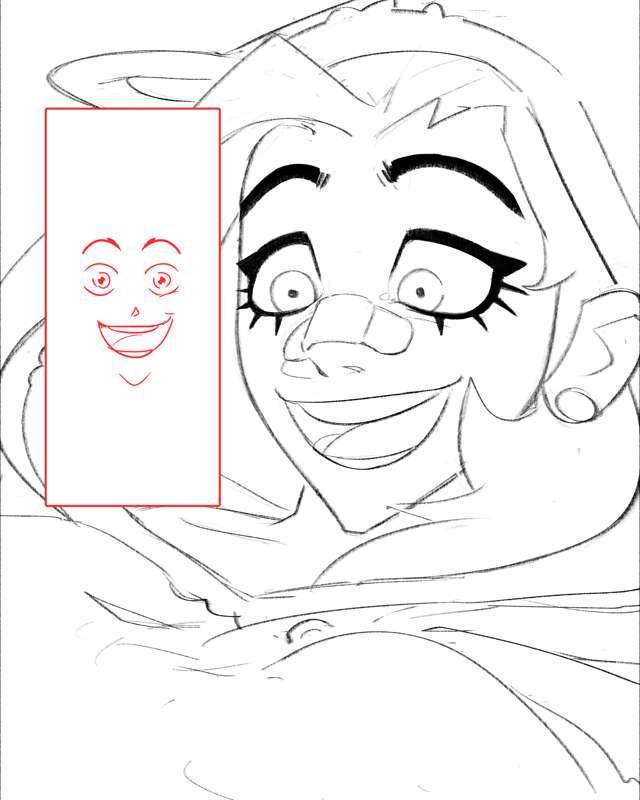ramonn90
Express Yourself: Mastering Facial Expressions for Emotionally Engaging Art
Published: May 5th 2023, 11:33:06 pm








Hello Kings and Queens!
In the latest Discord poll, you chose "Facial Expressions" as our topic of the week. Today, we're going to delve into the importance of facial expressions in art and offer some unique techniques and insights to help you enhance your ability to depict them accurately.
Why are facial expressions important in art?
Have you ever drawn a character that seemed lifeless and unrelatable? The lack of emotion and expression can make your characters appear flat and disengaging. This is where the importance of facial expressions comes into play. Facial expressions are a universal language that tells a story without words. They allow artists to convey emotions and personality, making characters feel real and relatable, regardless of the viewer's cultural background or language. So, if you want to breathe life into your characters and create a connection with your audience, mastering facial expressions is a must.
Mastering the anatomy of facial expressions
Before we dive into the specifics of different emotions, it's essential to understand the underlying anatomy that enables facial expressions. Key facial muscles such as the orbicularis oculi (eye), zygomaticus major (smile), and depressor anguli oris (frown) play a significant role in portraying various expressions. Familiarity with these muscles will provide you with a solid foundation to build upon and aid you in creating more realistic expressions.
Increase your awareness
Observation is a powerful tool for artists. The more you observe, the better you understand, and this holds true for facial expressions. Study people's faces in real life, in photographs, or even in other artists' work. Pay attention to the nuances in the eyes, eyebrows, and mouth that communicate different emotions. You can even examine your own expressions in a mirror or via video recordings – it might feel a bit silly, but it's incredibly beneficial. I personally find Pinterest an excellent resource for reference images.
Breaking down expressions into simple shapes and lines
Don't overcomplicate your work. Remember, even the most complex expressions can be broken down into simple shapes and lines. Check out how expressive meme faces are despite their simplicity. Or take a look at character designs intended for animation – they're usually simplified to ease the animation process, but they still pack a punch in terms of emotion. Even if you're not planning to animate, studying these designs can offer valuable insights into simplifying and stylizing facial expressions.
Applying the simple structure to different expressions
Now, let's put our knowledge into practice. There are many emotions, and each one can manifest in numerous expressions. To simplify this, I've grouped them into six primary categories: Happiness, Sadness, Fear, Anger, Surprise, and Disgust. Each category includes subcategories representing slight variations of the main emotion. After defining these, I'll demonstrate one expression from each category, the one that I find to be the most visually distinctive and representative of that emotion. Understanding the primary expression's key elements will make it easier to capture the subtleties of the related subcategories, as they're essentially slightly modified versions of the main expression. Remember, the eyes, eyebrows, and mouth are your main focus areas:
Happiness
Expressions: Joy, Contentment, Excitement, Amusement.
- Excitement: For excitement, sketch a wide smile, with the mouth slightly open or teeth showing, raised eyebrows, and eyes that appear to sparkle or glimmer. The character's gaze might be directed upward or towards something that excites them.
Sadness
Expressions: Sorrow, Grief, Melancholy, Disappointment.
- Sorrow: For sorrow, illustrate a deep frown, tense eyebrows, and consider adding tears or watery eyes for emphasis.
Fear
Expressions: Anxiety, Panic, Terror, Nervousness.
- Terror: For terror, exaggerate the features even more than in fear, showing the whites of the eyes, a more open mouth, and deeper lines around the eyebrows and nose.
Anger
Expressions: Annoyance, Frustration, Rage, Irritation.
- Rage: For rage, intensify the features of anger by widening the eyes, furrowing the brows even more, and clenching the mouth tighter or gritting the teeth.
Surprise
Expressions: Shock, Astonishment, Wonder, Bewilderment.
- Shock: For shock, open the mouth widely, raise the eyebrows, and widen the eyes with a startled expression.
Disgust
Expressions: Revulsion, Contempt, Disdain, Repugnance.
- Repugnance: For repugnance, wrinkle the nose, narrow the eyes, and create a grimace with the mouth, as if the character is trying to pull away from something repulsive.
By structuring the emotions and expressions into categories and subcategories, we create an organized and easily understandable system that takes into account the variations within each category. Continue this process for each expression, emphasizing the key facial features that convey the emotion. Providing visual examples or illustrations to support your descriptions can be beneficial as well.
Conclusion
Mastering facial expressions is a vital skill for any artist who wishes to create compelling and relatable characters. By studying anatomy, observing people's faces, and breaking down expressions into simple shapes and lines, you can enhance your ability to convey emotions effectively in your artwork. With time, dedication, and practice, you'll be able to bring your characters to life, connecting with your audience and telling captivating stories.
-
Welcome, new Patrons! We've been buzzing with activity lately, and I'm eager to share some exciting rewards with you once I achieve a few personal Patreon goals. Keep an eye out for more engaging community challenges on Discord (and don't hesitate to join us if you haven't already). If you have any questions, feel free to reach out via DMs or Discord – I typically respond within 24 hours.
For more information, check out our Patreon FAQ: https://ramonn90.myportfolio.com/faq and Patreon Catalogue: https://ramonn90.myportfolio.com/work
Wishing you all a fantastic weekend, and a huge thank you for your incredible support!